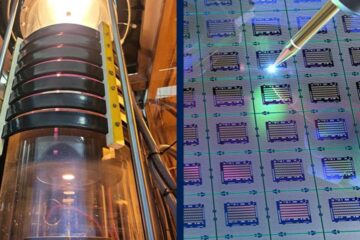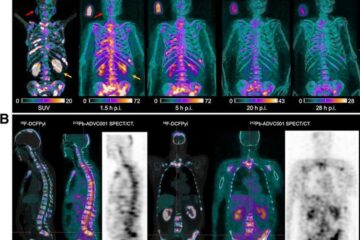New Crystalline Structures May Open Door to Molecular Filters

Imagine a mask that could allow a person to breathe the oxygen in the air without the risk of inhaling a toxic gas, bacterium or even a virus. Effectively filtering different kinds of molecules has always been difficult, but a new process by researchers at the University of Rochester may have paved the way to creating a new kind of membrane with pores so fine they can separate a mixture of gases. Industries could use these types of membranes for extracting hydrogen from other gases for fuel cells that will power the next generation of automobiles.
Mathew Yates, assistant professor of chemical engineering, is developing a new way to make molecular sieves-crystals with holes so small that they can discriminate between large and small molecules. Many such crystals exist and are used regularly in industry and laboratories, but Yates’s crystals may be able to be properly aligned and brought together into a sheet, which would dramatically expand their possible uses.
Yates has “grown” the new kind of crystals in a solution of water and oil, where droplets of water only a few billionths of an inch wide are dispersed within the oil with the aid of soap-like compounds. Molecular sieve crystals are normally produced in a simple container of water, which is filled with the right ingredients and heated to form crystals, but this produces crystals in a wide variety of sizes that are short and thick and hard to align. Gathering the crystals together with all their pores pointing in the same direction was all but impossible. Yates found that confining the reaction within the small droplets of water dispersed in oil altered the way the crystals grew-long fibers were created with tunnel-like pores.
“Long, thin fibers are much easier to align because their lengths are so different from their widths,” says Yates. “That difference gives us something to work with that has been missing from other kinds of molecular sieves. You might compare it to uncooked spaghetti, which tends to align in the same direction when bundled together.”
He and his colleague, graduate student Jen-Chieh Lin, are trying a number of experiments to align the fibers. One idea is to electrically charge them so they’ll stand on end like grass in a lawn, then a polymer could be poured in to hold them in that position. The team is also looking into aligning the fibers end-to-end in a thin film that may be cut and rearranged easily. Whichever way is successful, the result might be a rubber or glass-like sheet perforated with holes so small that most molecules would not be able to pass through.
“There are a wide variety of potential applications of these materials in optics, chemistry, and even computing,” says Yates. “Many of these potential applications require the synthesis of a large single crystal, which is difficult to achieve. The advantage of our approach is that we may be able to assemble many small, easy to synthesize crystals together in an ordered fashion so that they behave like a single large crystal.”
Currently, molecular sieves are only used to trap or confine certain molecules, not discriminately pass them along. One common application is in pellets used as drying agents with pores small enough for only water molecules. These are mixed with a substance, say a solvent, that contains some water that needs to be removed. The water molecules can fit into the pores, but the solvent molecules cannot. The molecular sieves soak up the water from the solvent, keeping it dry. A Yates-based filter could work in a similar fashion, though the filter would not “fill up” and could be used continuously. A molecular sieve membrane may then be used to purify water or other liquids.
Another possible application for a molecular-sieve membrane lies with its optical properties. The crystals can absorb small dye molecules into its pores. In some cases the dye molecules line up in a single file manner because they are confined to the small pores. When light shines on the dyed crystals, it reacts in interesting and useful ways, such as instantly doubling its frequency. A thin film of these dyed crystals could find application as optical components used in lasers or other light-based devices.
In addition to working out how to arrange the fibers into a working membrane, Yates’s team is also trying to understand the underlying chemistry that produces the fibers. The biggest puzzle is how a fiber several hundred nanometers long can grow when the bubble it initially forms in is only a few nanometers in diameter. If Yates can understand and control the crystal growth, he may open the door to producing more uniform fibers, or even fibers that line up readily once created.
This research was funded by the University of Rochester Laboratory for Laser Energetics and the Petroleum Research Foundation.
Media Contact
All latest news from the category: Life Sciences and Chemistry
Articles and reports from the Life Sciences and chemistry area deal with applied and basic research into modern biology, chemistry and human medicine.
Valuable information can be found on a range of life sciences fields including bacteriology, biochemistry, bionics, bioinformatics, biophysics, biotechnology, genetics, geobotany, human biology, marine biology, microbiology, molecular biology, cellular biology, zoology, bioinorganic chemistry, microchemistry and environmental chemistry.
Newest articles

Silicon Carbide Innovation Alliance to drive industrial-scale semiconductor work
Known for its ability to withstand extreme environments and high voltages, silicon carbide (SiC) is a semiconducting material made up of silicon and carbon atoms arranged into crystals that is…

New SPECT/CT technique shows impressive biomarker identification
…offers increased access for prostate cancer patients. A novel SPECT/CT acquisition method can accurately detect radiopharmaceutical biodistribution in a convenient manner for prostate cancer patients, opening the door for more…

How 3D printers can give robots a soft touch
Soft skin coverings and touch sensors have emerged as a promising feature for robots that are both safer and more intuitive for human interaction, but they are expensive and difficult…





















